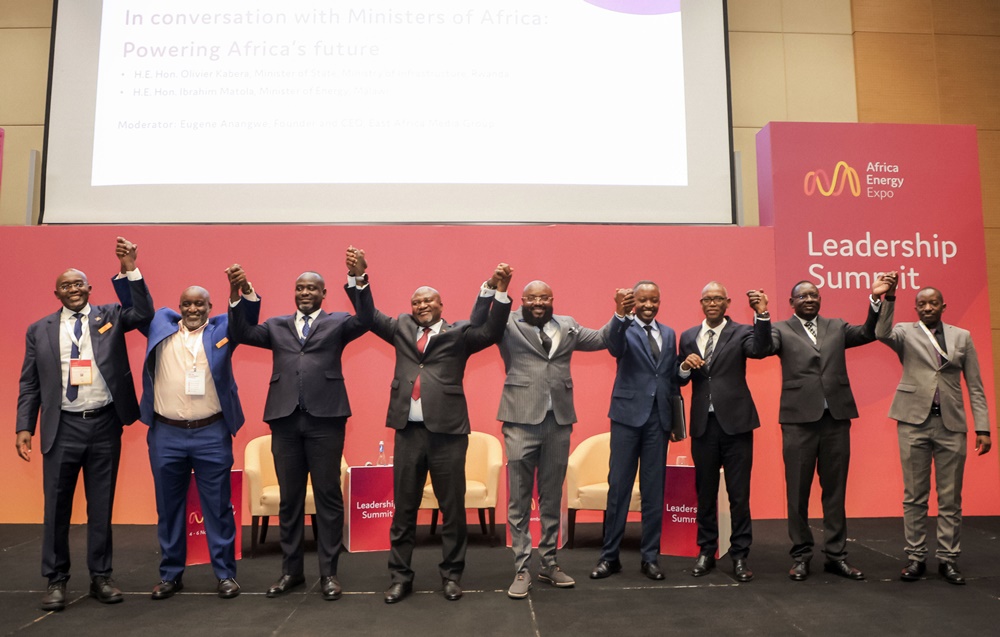News & Events Details

Jun
70% electrification target on track - REG
Kigali, 30th June 2016- Rwanda Energy Group (REG) has insisted it will meet the 2018 target to ensure at least 70 per cent of national households are connected to electricity.
With 600,000 customers of REG currently connected to power, across the country are contributing 24 per cent to the overall target of 70 per cent households targeted by 2018.
The 2018 connection target includes 48 per cent on grid and 22 per cent off grid power generation.
REG has recorded generation capacity increase of 89.5 megawatts over the last two years of its establishment, bringing the current total installed capacity to 190 megawatts, with the Government projecting 563 megawatts power generation in the next two years.
Despite some skepticism about the 70 per cent target of connectivity, REG Chief Executive Officer, Jean Bosco Mugiraneza is confident that there are “quite a number of projects in the pipeline” to make the target feasible within the set timeframe.
“We will use both on-grid and off-grid solutions to achieve this target,” he said. “We are signing many contracts with investors to roll out solar systems in rural areas, and this is really working out.”
 REG’s Chief Executive Officer, Jean-Bosco Mugiraneza (C) speaks to media as Maj. Eng Jean Claude Kalisa, Managing director EUCL (L) and Emanuel Kamanzi MD EDCL (R)
REG’s Chief Executive Officer, Jean-Bosco Mugiraneza (C) speaks to media as Maj. Eng Jean Claude Kalisa, Managing director EUCL (L) and Emanuel Kamanzi MD EDCL (R)
Mugiraneza was, yesterday, addressing journalists on the status of energy in the country, in Kigali.
“On-grid generation, we are halfway our target, then off-grid we have to multiply efforts; that’s why we are signing contracts with investors. The 2018 target is still on, that’s why we have to change strategies and increase efforts to make it feasible,” he said.
Current electrification rates stand at, 100 per cent of hospitals, 85 per cent of health centers, 92 per cent of administrative sector offices and 45 per cent of primary and secondary schools.
Emmanuel Kamanzi, the managing director of Energy Development Corporation Ltd (EDCL), said electrification targets will be met but the main focus should rather be on how to match electricity supply with demand.
“We need to put infrastructure in place to close the power deficits and increase transmission lines,” Kamanzi said.
To enhance domestic and regional electricity access, interconnection lines are under construction to allow power trade/ exchange in the region. These include 220KV line Mirama-Shango of 93.2 kilometres connecting Rwanda with Uganda, 220KV Line Shango-Rubavu-Goma-Karongi of 180km connecting Rwanda with DR Congo, 220KV line Rusumo-Bugesera-Shango connecting Rwanda with Burundi.
It is expected that by 2018, the power-exchange project will be possible through 220KV power transmission infrastructure with all neighboring countries.
“When you look at the pipeline projects, we are saying that we should even move a bit slower to commit more.
Because we may sign up as many as we can, you may not be able to consume all the power you have. We need to have supply that meets the demand requirements,” Kamanzi said.
Kamanzi argued that once people relocate to stay along transmission lines, it will be easier for the utility to reach as many households as possible at minimum cost.
Gishoma peat plant in testing phase
During the press conference, REG’s Mugiraneza also confirmed that Gishoma Peat Power Plant is now in its testing phase. The plant is currently generating 10.85 megawatts.
“The testing of Gishoma Peat Power Plant, which will generate 15 megawatts in total, has been going on since June 10, with CIMERWA (cement manufacturer) using the load,” said Mugiraneza.
Gishoma peat to power plant is the first power plant of its kind in Africa.
Categories
Archives
- November 2024
- October 2024
- September 2024
- July 2024
- May 2024
- April 2024
- March 2024
- August 2023
- July 2023
- June 2023
- May 2023
- April 2023
- February 2023
- December 2022
- August 2022
- July 2022
- June 2022
- May 2022
- April 2022
- March 2022
- February 2022
- January 2022
- December 2021
- November 2021
- September 2021
- August 2021
- July 2021
- June 2021
- May 2021
- April 2021
- February 2021
- January 2021
- December 2020
- November 2020
- October 2020
- September 2020
- August 2020
- July 2020
- June 2020
- April 2020
- March 2020
- February 2020
- January 2020
- December 2019
- November 2019
- October 2019
- September 2019
- August 2019
- July 2019
- June 2019
- May 2019
- April 2019
- March 2019
- February 2019
- January 2019
- December 2018
- November 2018
- October 2018
- September 2018
- July 2018
- June 2018
- April 2018
- March 2018
- February 2018
- January 2018
- December 2017
- November 2017
- August 2017
- July 2017
- June 2017
- March 2017
- February 2017
- January 2017
- December 2016
- November 2016
- August 2016
- July 2016
- June 2016
- April 2016
- February 2016
- May 2015
- April 2015
- March 2015
- January 2015
- December 2014
- August 2014
- July 2014
Related News
Our Partners
Please fill in the form or Call us on our Toll free number 2727























